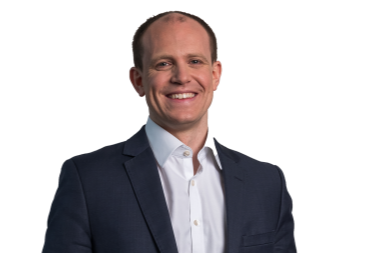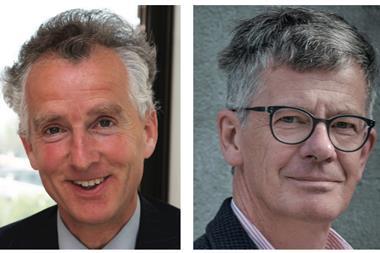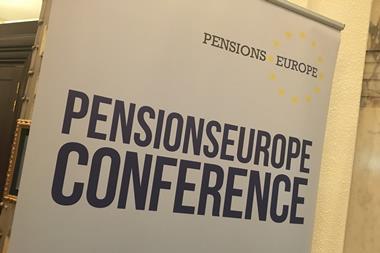European pension associations have scrutinised the proposals for review of the IORP II Directive launched in March by the European Insurance and Occupation Pension Authority (EIOPA), with clear views on proportionality and cross-border activities, but also on the topics of sustainability, diversity and inclusion that are inflaming public debate.
EIOPA’s consultation, which ends today, has also covered further issues including conflict of interest, liquidity risks – in light of the liability-driven investment (LDI) crisis in the UK last year – and the shift from defined benefit (DB) to defined contribution (DC) systems in Europe, with an eye to the reform in the Netherlands, and the topic of member engagement.
PensionsEurope is in favour of maintaining a minimum harmonisation in terms of legislation, stressing that future reviews of the directive should follow the principles of subsidiarity and proportionality to exempt small IORPs from certain requirements.
EIOPA is considering the current threshold for this exemption (100 members or €10m in assets) relatively low, compared with the thresholds used in the Solvency II Directive, it said in its consultation paper, eyeing to increase the limits to 1,000 members and beneficiaries, and €50m in assets.
The German occupational pension association, Aba, believes that lifting the threshold is not in the interest of IORPs in Germany, therefore it rejects the proposal, with 30-45% of the country’s occupational pensions institutions below those limits, it said in a presentation on its position during its annual meeting held in Berlin earlier this month.
PensionsEuorope, instead, believes that upping the thresholds is a way to strengthen proportionality, adding that other criteria including size and internal organisation of IORPs should be considered.
For Austrian pension funds the Directive does not require major changes but it is essential to stick to the principle of minimum harmonisation and proportionality. In principle, said Stefan Pichler, managing director of the pension fund association Fachverband der Pensions und Vorsorgekassen, this is guaranteed by the Directive.
“In recent years, there has been an increasing trend towards horizontal regulation, EU legislation covering all financial institutions (for example disclosure regulation). With such initiatives, proportionality is often lost,” he added.
EIOPA tends to subject insurance companies and pension funds to the same regulations, but in terms of proportionality there are differences in the business model and country-specific framework conditions, he added.
In the consultation paper, EIOPA has added a reference to multi-sponsor IORP providers (MIPs), as a potential source of conflict of interest. MIPs accounted in 2021 for approximately €210bn in total assets, 60% of the share managed in Germany, Italy and the Netherlands, according to the paper.
For Aba, considerations relating to MIPs should be evaluated in more detail, said Christian Röhle, head of pensionskasse management and legal at Hoechst Group.
On diversity and inclusion, the German association thinks that management bodies of occupational pension institutions should mirror the structure of the membership, and the sponsoring companies, and not the society as a whole, applying the principle of proportionality and taking into account the role of social partners.
Sustainability, diversity and inclusion, shift to DC
Mefop, the Italian organisation for the development of the pension fund market, has organised meetings with pension funds to draft a response to EIOPA’s consultation. During such meetings Italian pension funds highlighted some sustainability challenges.
“With the latest EIOPA proposal, pension funds would be required to take into account the principle of double materiality, considering the impact of their investments, and this is a topic that for Italian pension funds may be problematic to manage,” said Antonello Motroni, researcher for the Department of Economy and Finance at Mefop, and member of the Occupational Pension Stakeholder Group at EIOPA.
EIOPA’s consultation paper is recommending inclusion of sustainability considerations in investment decisions of IORPs, and double materiality in a proportionate way.
The IORP II and the Sustainablie Finance Disclosure Regulation (SFDR) allow pension funds a voluntary approach on the topic of sustainability, and the voluntary approach is right in view of proportionality principle, according to Mefop.
“Strict rules on diversity and inclusion might also become a bit tricky, because for example the appointment of board of directors is in the hands of social partners, not of the IORPs, and mirrors the labour market. In Italy in fondi pensione negoziali [industry-wide pension funds] the proportion of men is normally higher than those of women, and this is reflects in the board of directors,” Motroni said.
In Austria, the social partners are responsible for designing the architecture on sustainability that, if not embedded in the ‘Prudent Person Principle’, can be taken into account through risk management, Pichler said, adding that, however, sustainability preferences of individual beneficiaries cannot all be taken into account.
From the point of view of Italian pension funds, there aren’t many aspects of the consultation paper of EIOPA that would have a large, negative impact on IORPs. Occupational pension institutions in Italy have dealt with conflicts of interest and reporting to the supervisory authority for years without great challenges.
“One proposal in the consultation paper is to introduce an obligation for supervisory authorities to gather data on pension funds. This law is already in force in Italy, with a guideline for reporting to supervisory authority COVIP that has been reviewed in 2015 to make it more detailed,” Motroni explained, adding that the last review was conducted in 2018, to align guidelines with EIOPA’s requirements.
With regard to the issue of member engagement, a common template for pension benefit statements already exists, also taking into account EIOPA’s own templates, applying to all types of pension benefits, IORPs and non IORPs, in line with a flexible labour market.
“On the shift from DB to DC, EIOPA is maybe focusing on what is happening in the Netherlands, but the IORP II directive has already been applied to pension funds offering defined contribution schemes, and it is working well,” Motroni said.
Hansjoerg Müllerleile, managing director of MetallRente, said the social partner model is the only DC arrangement in Germany’s second pillar pension system, stressing the role of employer and employee representatives in the mechanism, and a different risk management approach borne collectively compared to those of pure financial products offered in other countries in Europe. He warned of the risk of doubling rules leading to an increase in costs for the schemes.
In Austria, the transition from DB to DC has essentially already come to an end.
“The solvency requirement is adequately taken into account through the comprehensive introduction of the ‘Prudent Person Principle’. Assets are always invested with the aim of ensuring the security and quality of the portfolio as well as its liquidity and profitability,” Pichler said.
Too soon for a review?
For Janwillem Bouma, chair of PensionsEurope, the review of the IORP II Directive comes very soon after its implementation, in 2019 officially, although a number of member states were late to this date.
“It is too early to propose any major revision and we are happy to see that EIOPA is of the same opinion,” he added.
Moreover, according to a survey conducted by EIOPA, whose results are included in the consultation paper, most supervisory authorities in member states said that governance and prudential requirements are already adequate, also as a EU minimum standard.
With the Directive, Italian pension funds have made progress on risk management and governance against the challenges of capital markets. IORP II has made a positive contribution.
“IORP II is in force in Italy since 2021, but maybe we need more time to fully apply it and for pension funds to understand it,” Motroni said.
The latest review goes in the direction of addressing pressing challenges, adjusting some critical elements of the IORP II Directive. “Digitisation and sustainability are as a matter of fact challenges, and EIOPA’s proposal goes in the right direction of addressing these pressing challenges,” he added.
The Directive, instead, has failed in its intention to create a functioning market for cross-corder activities and transfers, but changes in rules should not have any negative impact on non-cross-border IORPs, PensionsEurope warned.
MetallRente’s Müllerleile stressed that obstacles for cross-border activities are not built by supervisory rules, but as a consequence of different labour and tax rules existing in member states.
He added that what is needed is a “sweet spot” in terms of supervisory law, so that companies are in a position to manage cross-border transfers with their occupational schemes, adding that Aba does not want a “run off” through an arbitrage of cross-border rules.
Pichler of the Austrian pension fund association agrees on the need to avoid regulatory arbitrage, adding: “In principle, it would be very welcome if the competent authorities of the member states would provide an up-to-date list of the necessary documents and relevant national social and labour law provisions. This would make it easier for providers to enter the market, and customers would also benefit from quick and clean implementation.”
A stronger approach on sustainability
EIOPA strongly supports the transition to a low-carbon, more resource-efficient and sustainable economy, it said in the consultation paper. It is also firmly in favour of reforming the IORP II Directive, specifically on sustainability, to align rules for IORPs to recent regulatory frameworks, and to fully integrate sustainability considerations in investment decision of IORPs.
It is advising IORPs to include information on how to take into account the integration of sustainability risks in risk management systems, and engaging with invested companies taking into account the preference of members.
It is also firmly promoting a governance based on diversity and inclusion in IORPs’ management boards, proposing to set a target for the representation of the underrepresented gender.
EIOPA´s approach to diversity and inclusion is not limited to gender, but looks also at education, religion or belief, ethnicity, socio-economic and/or cultural background, nationality, disability, in a way to improve monitoring executive behaviour, it said.
The association’s approach towards reforming the IORP II Directive seems to fulfill the view of its chair, Petra Hielkema, who pointed out earlier this year that in Solvency II and IORP II a concrete language on diversity on boards is missing.
Large versus small
In its repsonse, the European Association of Paritarian Institutions (AEIP) said it appreciated that EIOPA does not foresee changes to the minimum harmonisation character of the Directive and welcomed the consultation paper’s consideration to enhance proportionality.
“However, we emphasise the need for a more comprehensive consideration of this crucial principle also in EIOPA’s opinions and guidance,” AEIP noted.
“While AEIP recognises that increasing thresholds for exemptions can benefit small IORPs, we caution against a situation where the IORP II Directive will become applicable only to larger IORPs. Additionally, we urge EIOPA not to restrict NCAs [national competent authorities] from using size and internal organisation criteria when applying proportionality. Such criteria can provide legal certainty and predictability for IORPs and encourage a consistent approach,” AEIP continued.
Regarding cross-border procedures and activities, AEIP agrees that the next review should assess the need for improvements. However, it is essential to ensure that any changes do not interfere with national social, labour or tax law, nor have a negative impact on non-cross-border IORPs.
To enhance communication with members and beneficiaries, AEIP proposes granting more freedom to pension funds in delivering layered information. AEIP belieevs that “fostering and supporting the development of digital tools is crucial”. National pension tracking systems should also play a larger role as facilitators of the pension benefit statement.
AEIP acknowledges the importance of integrating sustainability factors into pension fund investments and agrees that the preferences of contributors should be considered. However, translating these preferences into a single investment policy remains challenging and cost-intensive in practice. AEIP highlighted that many IORPs already have ambitious responsible investment policies.
Therefore, a principle-based consideration of double materiality under the ‘Prudent Person Principle’ would align with the investment practices of numerous pension funds.
AEIP fully supports diversity and inclusion in management boards. In paritarian pension funds, IORP boards are appointed by social partners, ensuring the representation of diverse perspectives and interests. The ultimate goal should be to establish a truly inclusive and diverse culture and promote good governance.
The latest digital edition of IPE’s magazine is now available

Topics
- aba
- Corporate governance
- diversity
- diversity and inclusion
- European Association of Paritarian Institutions (AEIP)
- European Insurance and Occupational Pensions Authority (EIOPA)
- IORPs
- Legislation
- Markets
- Mefop
- MetallRente
- PensionsEurope
- Reform & Regulation
- Solvency II
- Sustainability
- Sustainable Finance Disclosures Regulation (SFDR)

































No comments yet